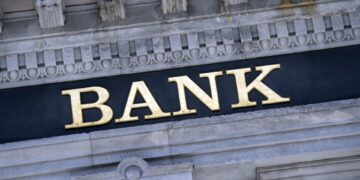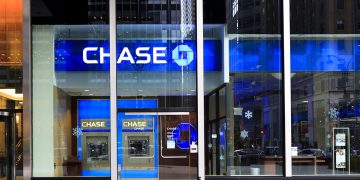If you are looking for another sign that the economy is rebounding and that average Americans are finally starting to benefit, you should check out what’s happening with financial stocks.
Shares of regional banks are thriving. Those small financial firms make most of their money from taking deposits and issuing mortgages and small business loans. That’s different from big Wall Street banks, which do significant business in stock and bond trading and in advising companies on mergers and IPOs.
The SPDR S&P Regional Banking ETF is up nearly 15% so far in 2021, compared to a gain of 5% for the broader Financial Select Sector SPDR ETF.
The latter fund has JPMorgan Chase, BlackRock, Goldman Sachs, Bank of America and Morgan Stanley as some of its top holdings.
The regional banking fund, on the other hand, owns banks that more everyday consumers are likely to interact with, such as First Republic, Regions Financial, M&T Bank and Huntington Bancshares.
“The regional banks are closer to Main Street. You could argue that they have their thumb on the pulse of the real economy more than the ivory tower types on Wall Street,” said Donald Calcagni, chief investment officer with Mercer Advisors.
Real estate boom is good news for local banks
Many of the top regional banks have been benefiting from the explosive demand for housing — and the mortgage boom should continue as long as interest rates remain low.
Consumers may look to take out more loans to buy cars or spend more with credit cards if the economy improves. That would also help regional banks.
“The Main Street banks all have trends moving in a positive direction. Most people are thinking that on the other side of Covid — whenever that is — there will be pent-up demand for growth,” said Richard Schaberg, head of the US financial Institutions group at law firm Hogan Lovells.
That could lead to more merger activity. Several big regional bank mergers have taken place in the past few months — that has helped prop up their stock prices, too.
Huntington Bancshares agreed to buy TCF for about $22 billion in December. That deal will create a regional bank powerhouse in the Midwest.
First Citizens BancShares bought CIT Group late last year for $2.2 billion. And California’s SVB agreed to purchase Boston Private for $900 million in January.
“There could be more merger activity. Banking is a business of scale,” Schaberg said.
Even the recent increase in longer-term bond yields is unlikely to hurt regional banks either, experts said.
Banks lending more but also taking in more deposits from savings
The rise in the 10-year US Treasury rate to just under 1.2% could help boost earnings for regional banks since it will increase the profit margins on the loans they issue.
Since rates are still near historical lows, it’s not as if consumers are going to suddenly stop buying homes.
“What you’re seeing with regional banks is two positive trends,” said Scott Clemons,chief investment strategist with Brown Brothers Harriman.
“Higher long-term rates are fuel to boost margins and improve earnings,” he said. “And there is a lot of dry powder and pent-up demand. It’s the best of all possible worlds for investors.”
Plus, banks have a ton of cash to lend as many people are still saving a lot in bank accounts.
The personal savings rate was 13.7% in December, according to data from the Federal Reserve. It was just 7.6% at the start of 2020 — right before the pandemic hit the US.
For many consumers, the security of a federally insured bank account — despite low interest rates — is more appealing than rolling the dice on the stock market.
Tom Plumb, manager of the Plumb Balanced Fund, said one way he’s investing in this trend is through technology company Mitek, which provides digital authentication services to financial firms for online banking services and mobile apps.
“The savings rate is going through the roof because people’s money has to go somewhere,” Plumb said








